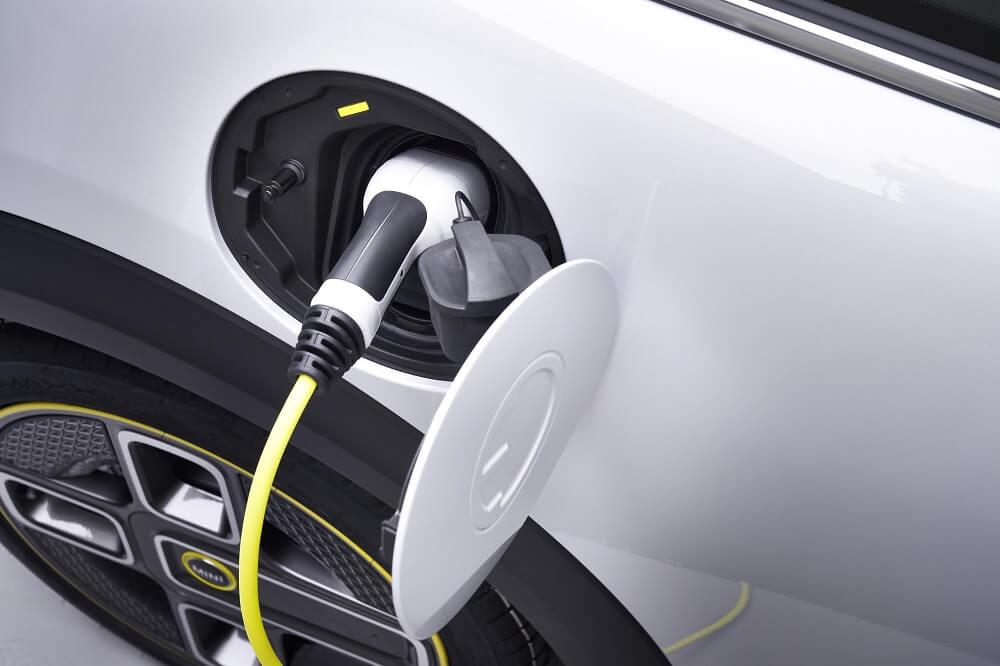Buyers are the winners as EV prices tumble

Is Australia in the middle of an electric vehicle (EV) price war? Are manufacturers simply trying to move older stock before the end of the financial year? Or have consumers cooled on the new technology?
These questions and many more like them are being bandied about following several different EV manufacturers announcing significant price cuts on current models, presumably in a bid to move unsold vehicles on their fleets.
‘Cars on grass’ is an industry term used to describe how many vehicles a car maker or importer has sitting in its holding yards at any given time, and it’s often seen as a barometer of a brand’s health and market appeal.
In a healthy system, vehicle importers have the supply and demand side of the equation working harmoniously so that supply from the factory meshes closely with customer orders, ensuring short customer wait times and a steady stream of new stock moving out the door at the right price.
But car factories are like the proverbial QEII cruise liner in that they take a long time to stop or change their output, with high volumes of cars continuing to be built and shipped for weeks or even months after demand has cooled in each market.
This scenario can then lead to a situation where the brand begins to accumulate surplus stock, on which the clock is ticking as defined by the vehicle build plate.
Current-model vehicles that are possibly overpriced and have been sitting around for a while have an older build date on their compliance plate which can make them harder to shift at retail, often leading to price reductions on these models to clear the stock.

Renault Megane E-Tech.
This may have been a contributing factor in EV market leader Tesla’s decision in May to cut prices on its popular Model 3 and Model Y EVs.
It was the brand’s third price cut in two months, with the latest cut slashing between $3,000 and $5,000 off certain variants and bringing the price of the most affordable Tesla Model Y Rear Wheel Drive down to $55,990 plus on-road costs.
The entry-level Tesla Model 3 sedan, meanwhile, had its price reduced by $4,000 to $54,900, meaning both battery-electric Tesla models are now cheaper than some internal combustion powered rivals.
Despite this, Seven News reported in early June that the car maker had more than 2,000 vehicles sitting in its Melbourne holding yards, with Victorian Transport Association spokesperson Peter Anderson telling viewers that unlike most Tesla cars that arrived into the country, these vehicles had not been presold.
While still clearly the Australian market EV leader, Tesla does have a history of wildly fluctuating sales from one month to the next, thanks to seeming “drought or plenty” supply issues with the Chinese factory where Australian vehicles are built. But this time the volume of what Network Seven claimed were unsold vehicles suggests something more structural is occurring, particularly as it comes on the back of weak consumer sentiment and other EV brands announcing similarly deep price cuts in recent weeks.
Tesla rival Polestar cut between $5,000 and $15,000, depending on the variant, from its Polestar 2 range with the Long-Range Dual Motor variant in Pure specification having the biggest haircut, reducing its price to $61,400 (MRLP) plus on-road costs, but only until 9 June.
French car maker Peugeot has also taken the scalpel to its e-2008 electric SUV with new and demo MY23 versions of the E-2008 GT selling for a sharp $39,990, $20,000 lower than its usual $59,990 recommended retail price. The Peugeot offer is available until 30 June.
Let us do the work finding your next new car
Fellow French brand Renault is another to have honed the blade to shave a razor-sharp $10,000 off the price of its Megane E-Tech electric car.
The deal sees the small electric SUV’s usual $64,990 retail price slashed to a competitive $54,990 (RRP), undercutting electrically powered category rivals including the Jeep Avenger Limited ($57,990), Hyundai Kona Long Range ($58,000), Peugeot e-2008 GT FWD ($59,990), Mazda MX-30 E35 Astina ($66,560) and Mini Countryman SE Classic FWD ($64,990).
Nissan is another car maker to deliver drastic price cuts on its soon-to-be-replaced EV models, announcing a limited-time reduction to $39,990 driveaway for its entry-level Leaf, which equates to a stunning $18,000 reduction. The price cut was initially announced as a limited-time offer until the end of May, but has now been extended to 30 June.
Ford Australia has also slashed thousands off the price of its Mustang Mach-E SUV and E-Transit van in June, with all three Mustang Mach-E SUV models dropping by between $7,000 and $8,000, and the E-Transit van incurring a hefty $15,000 haircut.
One of the factors believed to be driving these and other EV makers to reduce prices is the flood of more affordable Chinese models coming onto the market, including the GWM Ora hatchback, which is currently Australia’s cheapest EV at $35,990 driveaway, and the MG 4 Excite which costs $39,990 driveaway. BYD is another Chinese car maker with particularly affordable EV offerings including the Dolphin which is available from $38,890 before on-road costs.
Some commentators have also pointed to the price cuts as evidence that the initial wave of EV early adopters has largely been satisfied and car makers are now grappling with the challenge of convincing everyday buyers to make the shift from an ICE to an EV, against a backdrop of hard-to-justify higher purchase prices, lack of charging infrastructure, poor resale value and worries about battery longevity.
In 2022, the Queensland Government released its Zero Emission Vehicle Strategy, designed to accelerate the Sunshine State towards a cleaner transport future, which outlines a target of 50% of new passenger vehicle sales being zero emission by 2030, moving to 100% by 2036.
.jpg?rev=9d00e984ba594dd1b6c8e176fcde71bb&hash=1285EE9A92D63A642C7F7AB634CE8AC7)
Ford Mach-E and E-Transit van.
The strategy also calls for 100% of eligible Queensland Government fleet passenger vehicles to be zero emission by 2026.
In 2023, 8.45% of all new cars sold nationally were EVs, representing 98,436 vehicles which was an increase of 120% on 2022 sales, according to figures supplied by the Electric Vehicle Council.
Queensland’s EV share in 2023 was 8.3%, ranking third behind the ACT (21.9%) and NSW (9.0%). Queensland was also one of the leading states and territories when it came to installing new EV charging infrastructure in 2023, adding 43 fast and 10 ultrafast charging locations.
In 2022, the Australian Government introduced its EV Discount policy, the primary benefit of which is an exemption from Fringe Benefits Tax (FBT) for electric vehicles purchased by companies and/or through salary sacrifice arrangements.
This incentive is available to anyone who can salary sacrifice a vehicle through their employer, and company fleets.
Separately, the State Government’s Queensland Zero Emission Vehicle Rebate Scheme provides eligible Queenslanders rebates of up to $6,000 for eligible new Zero Emission Vehicles purchased from 21 April 2023. Details of that scheme can be found here.
Related topics
Things to note
The information in this article has been prepared for general information purposes only and is not intended as legal advice or specific advice to any particular person. Any advice contained in the document is general advice, not intended as legal advice or professional advice and does not take into account any person’s particular circumstances. Before acting on anything based on this advice you should consider its appropriateness to you, having regard to your objectives and needs.
Insurance Products (excluding Travel Insurance) are issued by RACQ Insurance Limited ABN 50 009 704 152 (RACQI) and arranged by its agent, RACQ Distribution Services Pty Ltd (RDS) ABN 35 116 361 650, AFSL 567130 and RDS' authorised representatives (including RACQ Operations Pty Ltd ABN 80 009 663 414, AR No. 234978 (RACQO). Conditions, limits and exclusions apply. RDS and RACQO are in the RACQ group of companies. One of the companies in the RACQ group of companies has a minority shareholding in RACQI.
RDS and RACQO have not taken your personal objectives, circumstances or needs into account when preparing advice regarding insurance products and you will need to consider whether the advice is appropriate for you. Read the Product Disclosure Statement (PDS) and any applicable Supplementary PDS before making a purchase decision on this product. You can also access our Target Market Determinations on this website. RDS receives a commission from RACQI for the policies it arranges. RACQO receives fees paid for services it provides to RDS. Further details about remuneration are available on request prior to purchasing.
Banking and loan products issued by Members Banking Group Limited ABN 83 087 651 054 AFSL/Australian credit licence 241195 trading as RACQ Bank. Terms, conditions, fees, charges and lending policies apply. This is general advice only and may not be right for you. This information does not take your personal objectives, circumstances or needs into account. Read the disclosure documents for your selected product or service, including the Financial Services Guide and the Terms and Conditions, and consider if appropriate for you before deciding.
Except for RACQ Bank, any RACQ entity referred to on this page is not an authorised deposit-taking institution for the purposes of the Banking Act 1959 (Cth). That entity’s obligations do not represent deposits or other liabilities of RACQ Bank. RACQ Bank does not guarantee or otherwise provide assurance in respect of the obligations of that entity, unless noted otherwise.
RACQ Bank subscribes to the Customer Owned Banking Code of Practice which establishes higher standards than the law requires. The Code reflects modern consumer expectations and developments in approaches to issues such as consumer vulnerability, guarantors, and supporting customers through financial hardship. Please read our Customer Owned Banking Code of Practice page for more information.
RACQ Operations Pty Ltd (ABN 80 009 663 414 AR 000234978) and Members Travel Group Pty Ltd (ABN 45 144 538 803 AR 000432492) are acting as an Authorised Representative of the issuer of the insurance, Tokio Marine & Nichido Fire Insurance Co., Ltd. (ABN 80 000 438 291 AFSL 246 548). Any advice set out above is general in nature only, and does not take into account your objectives, financial situation or needs. Before purchasing any travel products, please consider the RACQ Travel Insurance Product Disclosure Statement (PDS) and the Target Market Determinations (TMDs) that apply to these products. Whilst the PDS outlines the Terms and Conditions of these products, the TMDs outline the intended class of customers that comprise the target market for these travel products. This will allow you to consider which products best suit your objectives, financial situation and needs and consider the products appropriateness to your personal circumstances. TMDs also outline matters involving the distribution and the review of these products. The PDS, Supplementary PDS and TMDs for each travel product can be found here.

